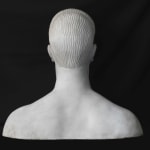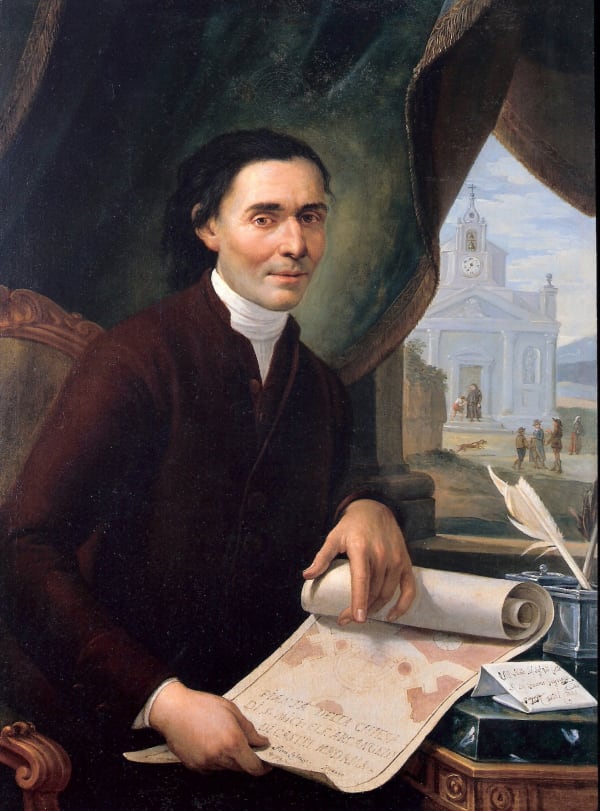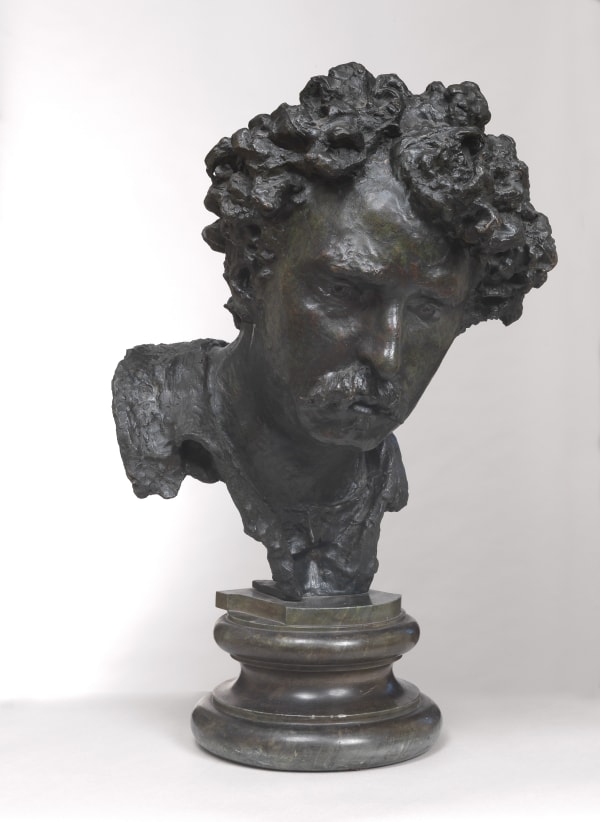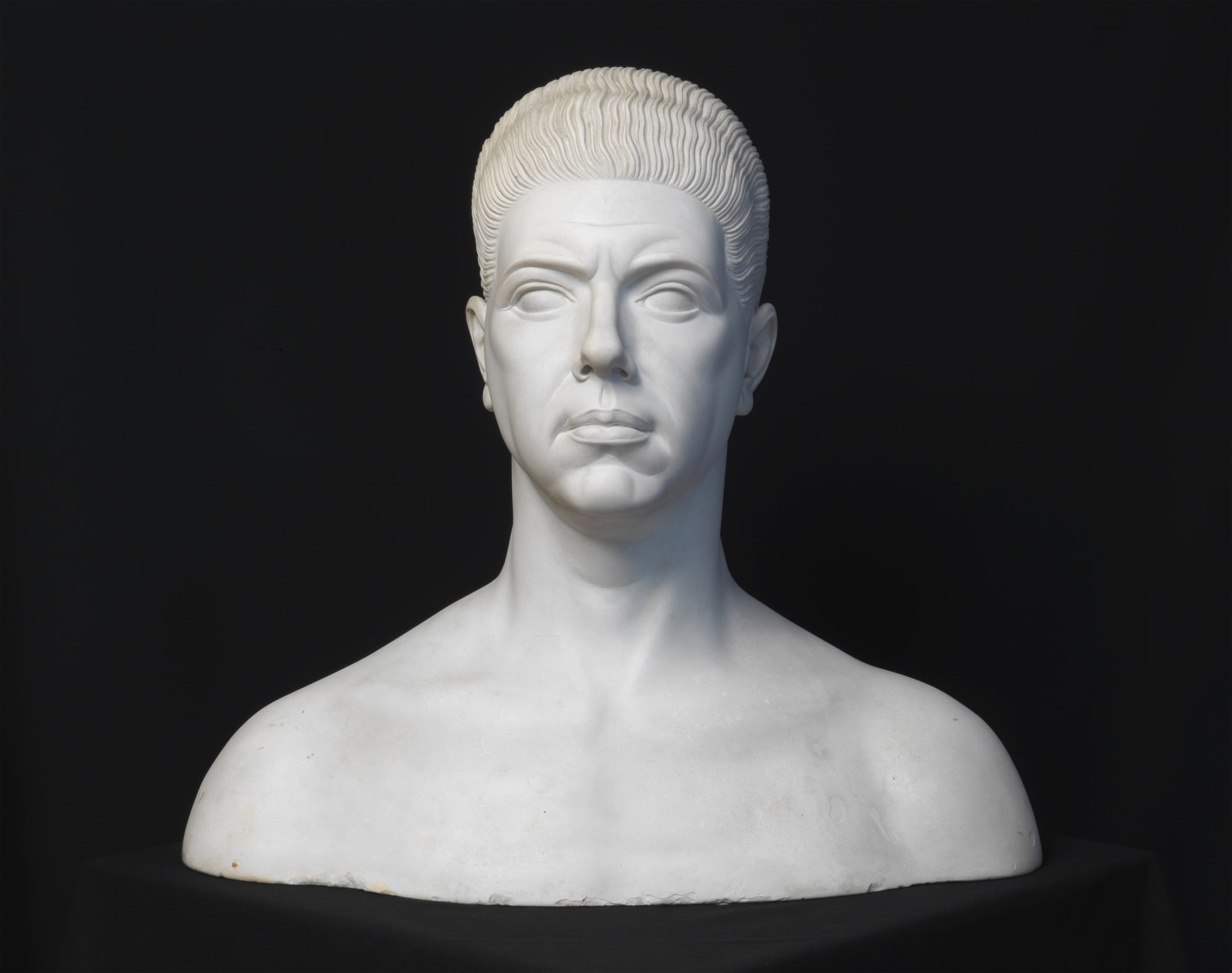
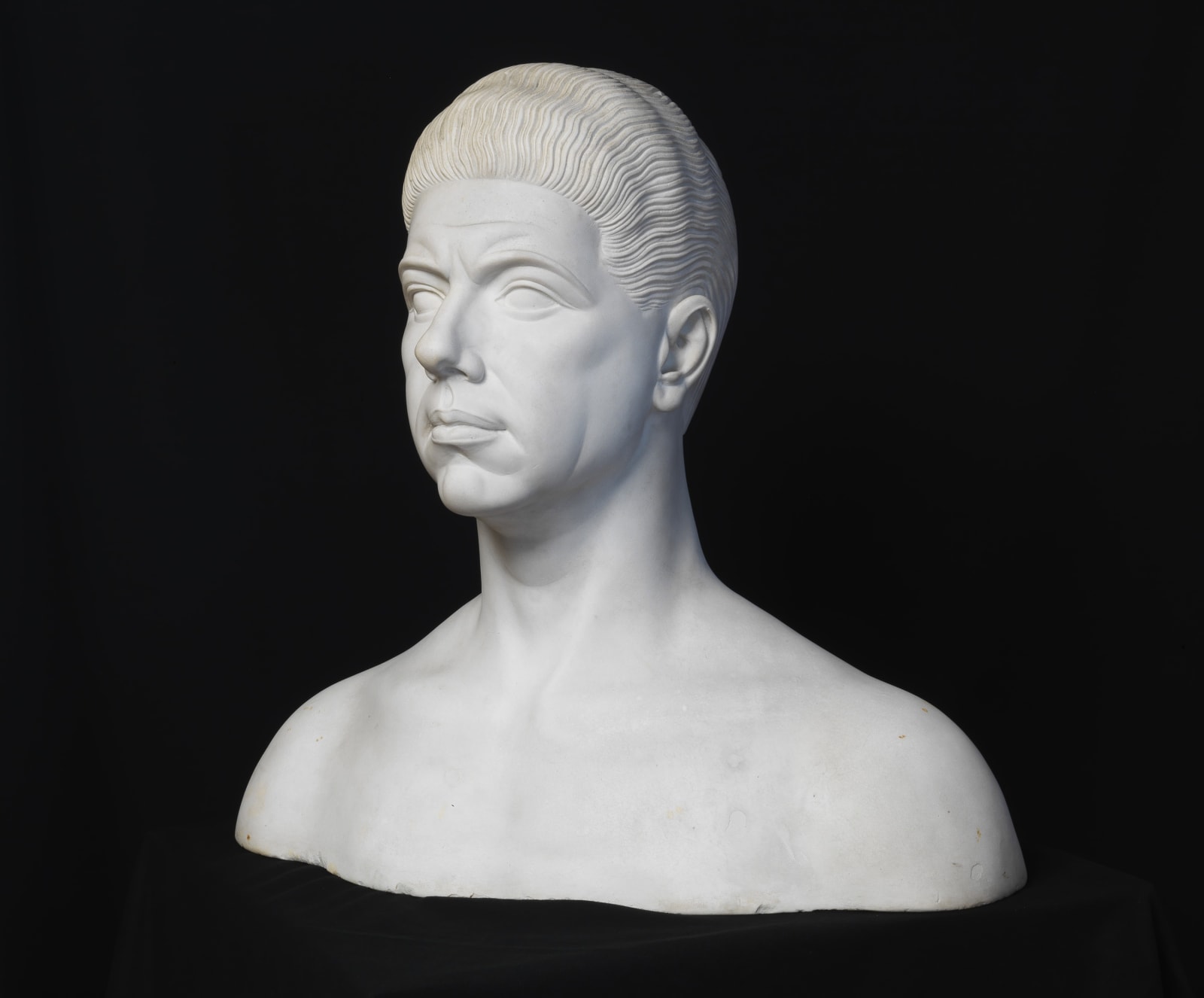

AMLETO CATALDI NAPLES 1882-ROME 1930
Further images
Literature
Reference bibliography:
Francesco Geraci, Artisti contemporanei: Amleto Cataldi, in “Emporium”, a. XLV, n. 267, Bergamo March, 1917, pp. 163-175, in part. p. 164;
Collective exhibition of Enrico Lionne, Amleto Cataldi and Vincenzo Miranda, with a text by Vittorio Pica, Galleria Pesaro, Milan, April 1919, Alfieri e Lacroix, Milan 1919, p. 16;
S.a., Exposition d’un sculpteur Italien, in “La Renaissance de L’art Française”, Paris, September 1923, p. 530;
Remigio Strinati, Artisti contemporanei: Amleto Cataldi, in “Emporium”, LVIII, n. 343, July 1923, pp. 22-36;
Alberto Riccoboni, Roma nell'Arte. La scultura nell'Evo moderno, publishing company Mediterranea, Rome 1942;
Francesco Sapori, La scultura italiana moderna, La libreria dello Stato, Rome 1949, pp. 39 e 445;
Felicita Cifarielli, Amleto Cataldi, in Dizionario Biografico degli italiani, vol. XXII, Rome 1979, pp. 283-84;
Secessione Romana 1913 – 1916, curated by Rossana Bossaglia, Mario Quesada, Pasqualina Spadini, Fratelli Palombi editori, Rome 1987, n. 40 e p. 290;
Roma Anni Venti. Pittura, scultura, arti applicate, exhibition curated by Irene De Guttry, Maurizio Fagiolo dell'Arco, Maria Paola Maino, Mario Quesada, Valerio Rivosecchi, Antonello Trombadori, Rome, Palazzo Rondanini alla Rotonda 7 June – 20 July 1990, Rome 1990 pp. 103-104;
Flavio Fergonzi, Mara Teresa Roberto, La scultura monumentale negli anni del fascismo. Arturo Martini e il Monumento al Duca d'Aosta, curated by Paolo Fossati, Umberto Allemandi & C. Turin 1992, pp. 154 e 185n.;
Scultura Italiana del primo Novecento, exhibition catalogue by Vittorio Sgarbi, Castello Estense, Mesola 2 May – 30 July 1992, Grafis Edizioni, Bologna 1992, pp. 70-71;
Alessandra Ponente, Amleto Cataldi, in Catalogo Generale della Galleria Comunale d'Arte Moderna e Contemporanea, curated by Giovanna Bonasegale, De Luca Editore, Rome 1995, pp. 495 – 496;
John S. Grioni, Ricordando Amleto Cataldi: lo scultore napoletano a Roma, in “Lazio ieri e oggi”, a. XXXXV, Rome 2009, p. 530;
Amleto Cataldi artista di Roma, curated by Francesco Cianfarani, Castrocielo (Rome) May 1914.
The young man offers us a bold, intense stare, his forehead creased in a slight frown just above his perfectly drawn eyebrows, his nose straight, his lips full and equally perfectly delineated. His features are framed in an ideal geometry yet they are handled with a naturalistic touch as though they were living, beating flesh. His hairstyle, on the other hand, is almost a badge, a sign, drawn and engraved with meticulous accuracy, transformed from pure realistic portraiture almost into a decorative motif, reminiscent in that respect of the hairstyle of Galatea (1926) in the Galleria Comunale d’Arte Moderna in Rome, a work probably carved after this one and one of the extremely fine nudes depicting women dancing for which the artist was universally admired: female nudes in sophisticated and vaguely Art Nouveau poses such as the Amphora or the Woman Reflected in the Water, or male nudes in athletic poses such as the Arrow (or Archer) and the later groups of athletes that once adorned the façade of the Stadio Flaminio.
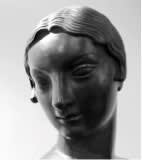
Amleto Cataldi, Galatea, 1925, bronze, Galleria d’Arte Moderna di Roma (detail)
Cataldi, who considered portraiture to be “the most energetic and satisfying genre in which a sculptor can express himself” (1), devoted the same degree of attention to this intense young man as he had devoted to portraits of young women such as the unforgettable faces of the Principessa Giovannelli, of Donna Anna Visconti di Modrone, of Signorina Andreozzi, of the dancer Maria Ricotti or of Francesca Bertini, (but also of the poets Cesare Pascarella and Gigi Zanazzo), which were reproduced in the leading art journals of the period.
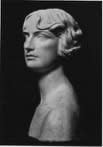
Amleto Cataldi, Donna Anna Visconti di Modrone, “Emporium” 1923
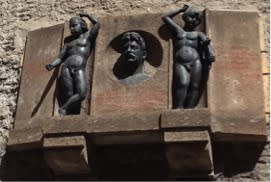
Amleto Cataldi, Monument to Giggi Zanazzo, 1929, Rome, native house of the poet
He appears to have turned his hand to the male portrait less frequently, as in this case in which the Apollo-like figure and boldly full-frontal pose hint at his study of Classical art. Here the sensitive modelling of the neck and naked shoulders reveals the perfect musculature of a latter-day kouros or of an athlete at rest who, were it not for the fact that he has nothing to indicate his membership of any branch of the armed forces, could well be a preparatory study for the allegorical figure of one of the sculptor’s best Monuments.
An eminent portrait artist, a sensitive explorer of the faces and the psychology of both the female and male genders, Cataldi embarked on his career in Rome in 1904, showing his work at the annual exhibition held by the Società degli Amatori e Cultori di Belle Arti and setting out down the shining path that was to make of him an extremely skilled and polished sculptor praised by critics even at the international level in the space of only a few years. Vittorio Pica was to write of him: “We are looking at an artist versatile in his inspiration and multifaceted in his execution, yet always interesting and attractive in the figures which he captures with uncommon skill in firm and elegant modelling now in bronze, now in marble.
A shrewd, diligent and sharp student of life, he succeeds in portraiture remarkably well because while he is capable of bringing out the special psychological expression of a female or male face, he models the bust with a nobility of pose which suggests that the time that he devoted to the study of the glorious masters of the Italian Quattrocento with fervent and undisguised passion was most certainly not wasted for he managed to learn a most valuable lesson from them.” (2).
Even though it has not been possible to discover any more precise information regarding this elegant bust in the extremely rich bibliography devoted to the artist, the sophistication of the modelling and the statue’s excellent finish, in addition to the fact that it was carved in such a precious material as marble, appear to indicate that Cataldi set particular store by this work. Thus it may well be one of the generically identified busts shown at a one-man exhibition which he held at the Galerie Dévambez in Paris where, as we can read in the brief article, he displayed “des nus et des bustes pleins de style et de séduction” (3) duly remarked on by critics. Cataldi showed about thirty works in Paris in September 1923, including a number of busts only generically identifed. The exhibition was a huge success also from a financial point of view and Cataldi managed to sell the Girl Combing Her Hair to the Musée du Luxembourg and the Archer to the Petit Palais, while his Medusa was purchased by a group of Italians and donated to the city of Paris for display in a garden and a group of bronze Putti was bought by the Italian Ambassador to France (4).
Notes:
1. Francesco Geraci, Artisti contemporanei: Amleto Cataldi, in “Emporium”, a. XLV, n. 267, Bergamo, March 1917 pp. 163-175, in part. p. 164
2. Vittorio Pica, Tre artisti napoletani, scritto in catalogo della mostra collettiva di Enrico Lionne, Amleto Cataldi e Vincenzo Miranda, Galleria Pesaro, Milan, April 1919 p.
3. S.a., Exposition d’un sculpteur Italien, in “La Renaissance de L’art Français”, Paris, September 1923, p. 530
4. Remigio Strinati, Artisti contemporanei: Amleto Cataldi, in “Emporium”, a. LVIII, n. 343, Bergamo, July 1917 pp. 22-36
-
 ANTONIO CANOVASelf-portrait of Giorgione, 1792
ANTONIO CANOVASelf-portrait of Giorgione, 1792 -
 PIETRO LABRUZZIPortrait of Giacomo Giustini Holding a Plan of the Church of San Michele Arcangelo in Castel Madama
PIETRO LABRUZZIPortrait of Giacomo Giustini Holding a Plan of the Church of San Michele Arcangelo in Castel Madama -
 VINCENZO GEMITOPortrait of Mariano Fortuny, c. 1880
VINCENZO GEMITOPortrait of Mariano Fortuny, c. 1880 -
 FRANCESCO PAOLO MICHETTISelf-portrait, 1877
FRANCESCO PAOLO MICHETTISelf-portrait, 1877 -
 VITALIANO MARCHINIArdito (Male portrait), 1919
VITALIANO MARCHINIArdito (Male portrait), 1919


